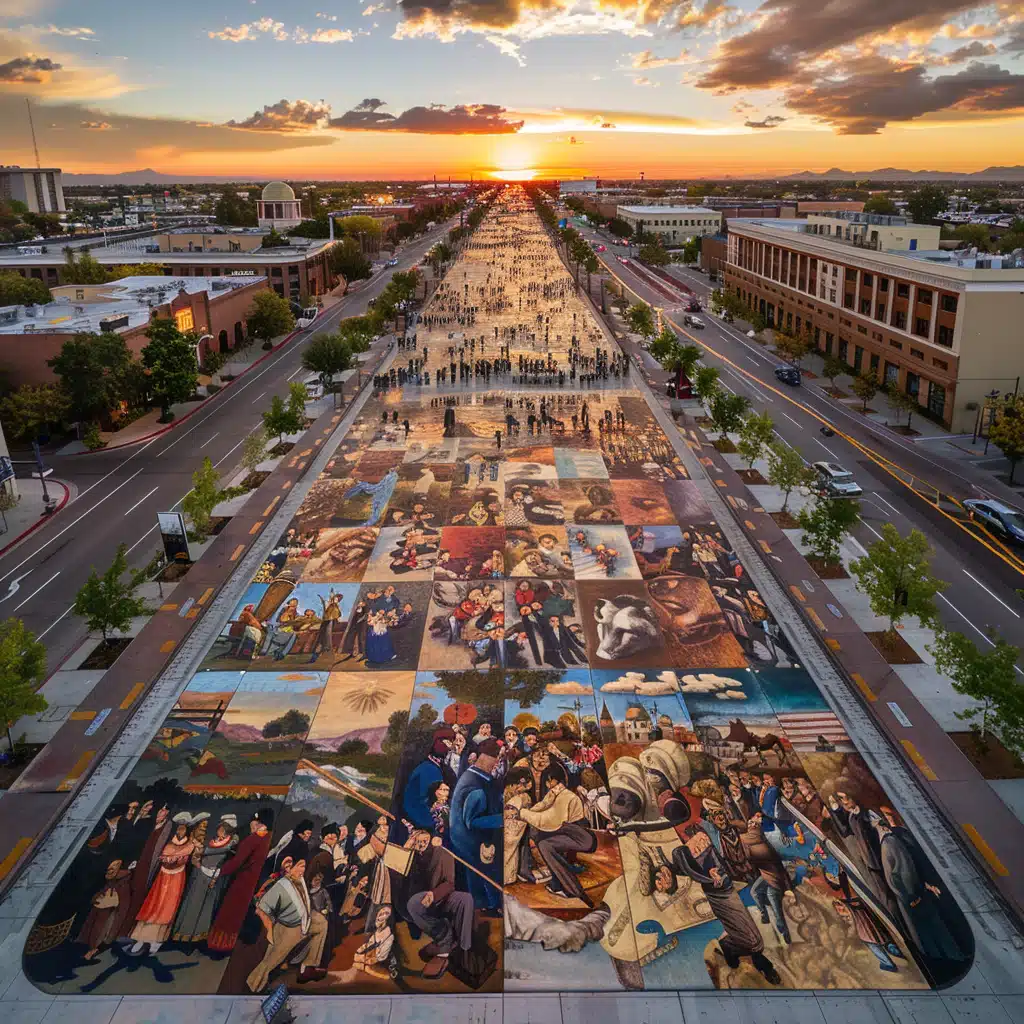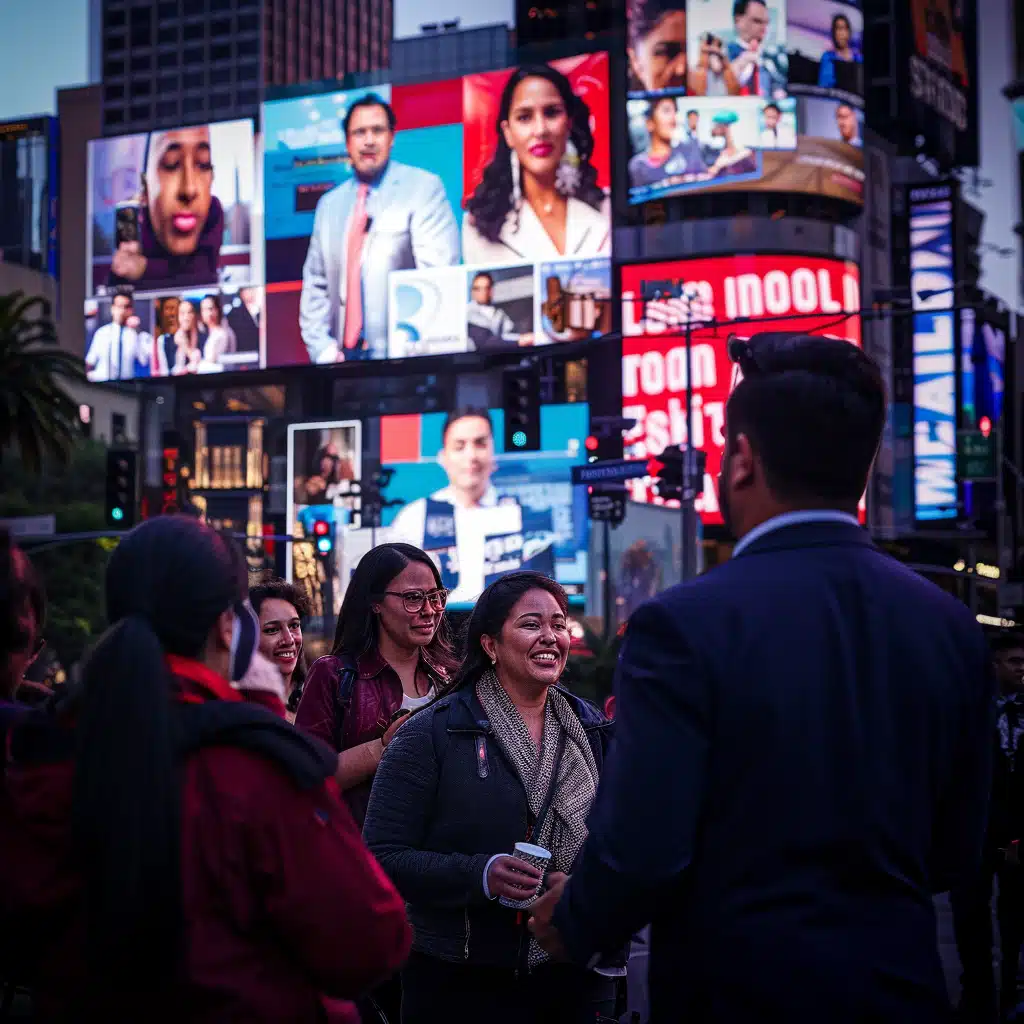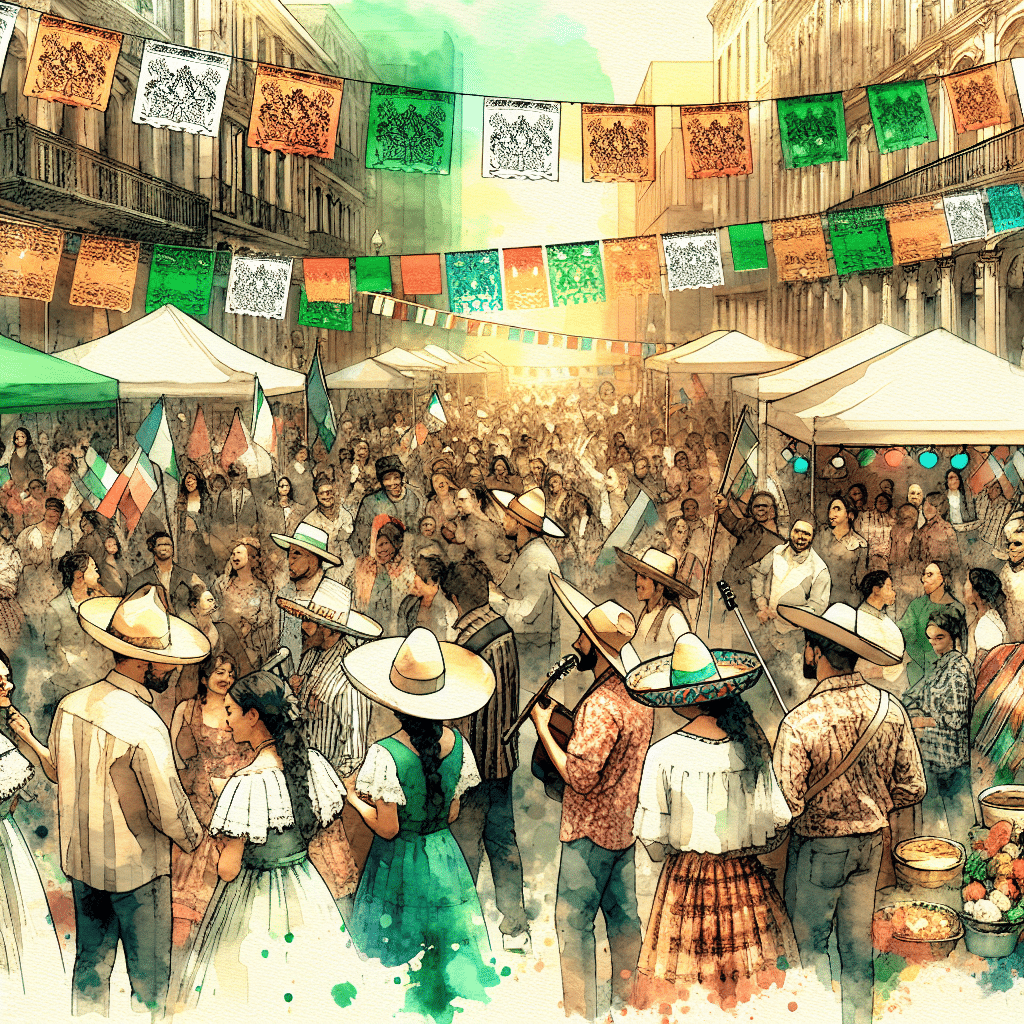
Digging Deep into the History of Latino Americans
The History of Latino Americans
Hola mis queridos lectores! As we take a deep dive into the vibrant tapestry that is the history of Latino and Hispanic Americans, let’s start by unrolling the first threads. ¿Sabías que? The origins of the Hispanic population in the USA go way back, intertwining with Spanish colonial history in North America. Nuestros antepasados left an indelible mark well before the creation of the United States, establishing early settlements that have since blossomed into the communities muy vibrantes we see today.
From the imprint of Spanish colonial endeavors to the resilient roots of those first Hispanic settlements, this historia isn’t just about the past; it’s a living legacy that shapes nuestro presente. So let’s embark on a journey, amigos, exploring the known facts and the soul of our collective narrative, starting with the question, “What are the origins of the Hispanic population in the USA?” Prepare to connect with our rich cultural heritage y a celebrar the history of Latino Americans, which is interlaced beautifully with the story of America itself.
What Are the Origins of the Hispanic Population in the USA?

The Spanish were pioneers in the territory of what is now the United States, with key centuries-old settlements shaping the early Hispanic presence. Hispanic and Latino populations first put down roots in North America since at least the 16th century. Spanish colonial history in North America is marked by early explorers like Juan Ponce de León, who landed in Florida in 1513, and subsequent settlements that followed, often seeking riches, spreading the Catholic faith, and enhancing Spain’s influence.
Some of the first significant Hispanic settlements in the region that became the United States include Saint Augustine in Florida, established in 1565, and later Santa Fe in New Mexico, founded in 1610. These communities represent el comienzo of Hispanic influence, showing resilience and adaptation over time to evolve into vibrant cultural hubs that reflect a blend of indigenous, Spanish, and eventually Mexican and other Latin influences. For instance, Saint Augustine is the oldest European-established settlement still occupied in the continental United States, demonstrating the longstanding Hispanic impact.
Beyond these first settlements, the Hispanic and Latino experience in America has been diverse and multifaceted, with various groups contributing to what is now a significant part of the U.S. population. Detailed accounts of these Hispanic origins and evolutions are well-documented, showing a rich tapestry of people who, while under the broad terminologies of “Hispanic” and “Latino,” represent an array of countries, cultures, and histories.
Indeed, Hispanic Americans come from a long line of influential presences in the U.S., from the aforementioned Spanish explorers and settlers to the myriad immigrant groups from Latin America who have made their way to the U.S. over centuries. With more than 60 million Hispanics in the U.S. today, understanding their diverse origins allows for a better appreciation of the multifaceted cultural and historical contributions they make to the country. From the rich heritage of Spanish colonial history to the enduring influence of early Hispanic settlements, the tapestry of Latino America is deeply woven into the fabric of the nation. For further reading on the early Hispanic presence in the U.S., you can explore the subject in detail at Wikidata.
How Has Latino Immigration History Shaped American Society?
Latino immigration history has been a cornerstone in the evolving mosaic of American society. From the early days of Spanish exploration to modern times, the so-called “waves” of immigration have defined the ever-changing demographic silhouette of the nation. So, what are these key patterns of Latino immigration into the United States?
Initially, Spanish explorers and settlers were the pioneers, creating permanent footholds in what is now Florida and the American Southwest. These were not mere transient expeditions; they laid the groundwork for future Latino communities that have since woven into the fabric of American history. Over time, these small enclaves blossomed into significant populations, especially in states like California, Texas, and New Mexico.
Then, as tumultuous events such as the Mexican Revolution shook the Latin American world, we saw “surges” as immigrantes sought safety and opportunity in the “land of the free.” These demographic shifts didn’t just change the population’s face; they totally reshaped American society—in cultural landscapes, labor markets, and even the political arena. One need only to consider the robust influence of Latino culture—from music to cuisine—to recognize this transformative impact.
Moreover, it’s undeniable that immigration policies have profoundly affected Hispanics in America. From bracero programs to DACA, the ebb and flow of policy reflect the nation’s complex relationship with immigration. The link between these policies and how they’ve shaped the lives of millions is highlighted in the extensive chronicle of immigration in the United States.
Hispanics now represent a powerful force, accounting for 19-20% of the U.S. population as of 2020. This population is conspicuously young, which has had a significant impact on education systems and will undoubtedly continue to influence the nation’s trajectory for generations to come.
But let’s be real, the camino hasn’t been easy; Hispanic communities have faced challenges due to fluctuating immigration laws, economic uncertainty, and social adversity. Despite this, resilience and significant contributions in various sectors, from civil rights to politics, signal an enduring legacy that continues to shape American society.
What Are the Significant Events in Latino American History?

Latino and Hispanic American history is defined by a series of significant events that start from the early colonial period and extend into our contemporary era. One major event that has had a profound impact on Hispanic heritage is the Mexican-American War. Fought from 1846 to 1848, the war reshaped borders and had lasting implications on relations between the United States and Mexico.
The Chicano Movement, or El Movimiento, is another key historical event, taking place primarily during the 1960s and 1970s. This civil rights movement sought to empower Mexican-Americans and fought against discrimination and for farm workers’ rights. Its significance in Latino history cannot be overstated, as it galvanized a community towards political action and cultural pride.
Each of these events, from the battlefield conflicts to the peaceful protests, weaves a rich tapestry that tells the story of resilience, struggle, and triumph within the Latino community. Pioneering moments and the pursuit of equal treatment under the law have contributed to shaping the unique Hispanic heritage celebrated today. To delve deeper, explore Hispanic Latinx Milestones which chronicles the journey and illuminates the milestones of the vibrant Latino community.
Latino and Hispanic Americans have not only faced challenges but have also made indelible marks on the American cultural landscape, from Cuisine and music to literature and politics. The Chicano Movement’s significance, for example, extended far beyond its immediate political goals, contributing to the development of art, music, literature, and even fashion, which echoed the sentiments and aspirations of an entire generation. These events serve as a reminder that the Latino American experience is an integral thread in the fabric of the United States’ history.
Who Are Some Key Figures in Hispanic American History?
Latino and Hispanic Americans have been an integral part of the U.S. tapestry, with key figures leaving a lasting impact on the country’s political, cultural, and social landscape. Notable political, cultural, and social leaders have emerged throughout the history of Hispanic Americans, each contributing to the nation’s vibrant and diverse narrative.
One cannot talk about Hispanic Americans in U.S. politics without mentioning Sonia Sotomayor, the first Hispanic and Latina Justice of the Supreme Court of the United States. Appointed by President Barack Obama in 2009, Sotomayor has become an influential figure in the justice system, bringing a unique perspective and voice to the highest court.
In the realm of cultural and social activism, Cesar Chavez stands as a towering figure. As the co-founder of the United Farm Workers (UFW), Chavez’s work advocating for the rights of farmworkers left a profound mark on labor history and Hispanic heritage in America. His commitment to nonviolent protest has inspired countless individuals fighting for social justice.
Ellen Ochoa’s accomplishments have taken Hispanics to new heights—literally. As the first Hispanic woman to go to space in 1993 aboard the Space Shuttle Discovery, Ochoa has been a trailblazer in the field of aerospace and a role model for aspiring young scientists.
In the entertainment industry, stars like Desi Arnaz and Rita Moreno broke through cultural barriers, becoming iconic figures in television and film, and paving the way for future generations of Hispanic and Latino performers.
The contributions of famous Hispanic Americans have been vast and varied, from Supreme Court rulings to strikes in the fields, from outer space explorations to memorable performances on screen and stage. These individuals exemplify how Hispanic Americans have been and continue to be formative in shaping the historical and political development in the U.S., as well as adding richness to its cultural fabric.
What Cultural Traditions and Contributions Define Hispanic American Identity?
Hispana y Latino traditions have profoundly shaped American culture, with their vibrant influences echoing across the United States. From the mural-filled streets of East LA to the salsa beats resonating in the clubs of Miami, Latino arts and cultural movements form the corazón of many urbano landscapes. Take a stroll through the Hispanic and Latino American category on Wikimedia, and you’ll witness the vivacious impact of these cultures.
Music, dance, visual art, literature, cuisine – all realms have been touched and transformed by the creativity of the Latino community. Legends in the music scene like Tito Puente y Gloria Estefan brought us irresistible rhythms that get even the shyest wallflower to bailar, while in the literary world, elites like Gabriel García Márquez redefined storytelling with magical realism that captivates readers worldwide.
As per their contributions to American history, Latinos have been pivotal in various domains from environmental justice, exemplified by Dolores Huerta’s activism, to the public service, marked by Justice Sonia Sotomayor’s historic appointment to the Supreme Court. Artists like Chicano’s own Judith F. Baca have depicted powerful historical narratives through grand scale murals, making the streets the canvas for Latino heritage y la lucha for derechos civiles.
Furthermore, events such as the annual National Hispanic Heritage Month highlight y celebrate the rich traditions and significant contributions Latinos have continuously provided to enrich the American experience. From the enduring legacy of ancient civilizations to contemporary expressions of cultural pride, Hispanic American identity is interlaced with a spirit of resilience, community, and passion for la vida. Latino arts have earned notable recognition through institutions such as the National Museum of Mexican Art in Chicago y the Smithsonian Latino Center, making it clear that these cultural currents are integral to the American story.
How Has the Civil Rights Movement Impacted Latino Americans?

The Civil Rights Movement of the 1960s had a profound impact on the Latino community by laying the groundwork for their civil rights struggles and inspiring leaders to fight against systemic discrimination. Latino Americans, facing discrimination similar to the African American community, joined the fight to achieve equality and justice.
Historical instances of discrimination against Hispanics are numerous, from segregated schools to unfair labor practices. One key victory against discrimination was the 1947 Mendez v. Westminster case, which abolished segregation for Hispanic students in California, years before the landmark Brown v. Board of Education.
Hispanic and Latino Americans contributed to social change not only through activism but also via the realm of sports. Figures like Roberto Clemente and Nancy Lopez serve as outstanding examples. Clemente, a Puerto Rican baseball player, used his platform to advocate for civil rights and humanitarianism, breaking barriers for future Latino athletes.
Additionally, Latino sports figures have often leveraged their visibility to address societal issues and support their communities. For instance, Oscar De La Hoya, through his success in boxing and philanthropy, has promoted positive change and provided hope for many Latinos. These athletes have shattered stereotypes, increased Latino visibility in sports, and contributed significantly to the social fabric of America.
The Civil Rights Movement and Latino Americans intersected notably with the establishment of organizations like the United Farm Workers, founded by leaders Cesar Chavez and Dolores Huerta. Their fight for labor rights among agricultural workers echoed the larger civil rights quest for equality nationwide.
To understand the Civil Rights Movement’s impact on Latino Americans, one must consider the broader context of discrimination and the vibrancy of the figures who have championed progress. Their legacy continues to influence and inspire the fight for Latino rights and recognition in American history.
What Is the Significance of Latino Representation in the Media and Politics?
Latino influence on American society is undeniable, shaping societal values and trends with its growing force. Este impacto comes not just from numbers but from the vibrancy and diversity of Latino communities that contribute to the American cultural mosaic.
For instance, Latino representation in American media has seen a notable upsurge, enhancing American culture and visibility. Al ver nuestros propios rostros y escuchar nuestras historias, the media empowers Latino voices and showcases the rich tapestry of our experiences. This representation helps to dispel stereotypes, foster understanding, and serve as a source of pride for our comunidad. It’s about seeing a parte de nosotros on the big screen, in newsrooms, or hearing nuestra música on mainstream radio. It’s representation que cuenta – and it matters.
Let’s talk about los votos, amigos. Latino voting patterns in US elections have shown interesting trends, becoming a powerful indicator of our collective influence. This demographic is influencing the out come of not just local elections, but también las presidenciales. Just look at the recent elecciones; the Latino vote played a pivotal role in key states. The implications are massive, as political parties now recognize the importance of capturing the Latino vote – a true testament to our creciente poder.
These patterns in voting signify not just participation, but a dedication to shaping policy and electing leaders who understand and represent Latino interests. It means we’re not just observing from the sidelines; we’re jumping into the ring, luchando for what matters to our families, our communities, and our future generations.
At the corazón of this conversation are the rich and complex identities encapsulated by the terms “Hispanic” and “Latino.” Understanding these identities is crucial, as detailed in this comprehensive overview. These labels encompass a diverse array of backgrounds, stories, and aspirations, all of which add to the overall American narrative. They also offer a glimpse into perspectives y experiences that are unique to our comunidad, pero that also resonate universally. When the media and political spheres embrace our voices, they’re embracing the future of America itself.
What Are the Origins of the Hispanic Population in the USA?
When did Hispanic and Latino populations first settle in North America?
The history of Latino and Hispanic Americans can trace its roots back to the early Spanish explorers of the 16th century. These explorations initiated the first settlements and established the longstanding presence of Hispanics in what would become the United States. The Spanish colonial history in North America played an influential role in these beginnings, with the first substantial settlement being established as early as 1565 in what is now Florida.
Early Hispanic settlements in America were not limited to the coastal areas of the southeast. As Spanish colonial endeavors ventured further, they influenced large portions of the American Southwest and California. St. Augustine, Florida, established in 1565 by the Spanish, is widely considered the oldest city in the country and serves as a testament to the profound beginnings of Hispanic influence in the USA. This settlement, along with others like Santa Fe, New Mexico, founded in 1610, began a historical trajectory that has led to vast cultural and demographic shifts.
These settlements were the precursors of a Hispanic presence that would evolve significantly over the centuries. The early Hispanic and Latino populations laid down the foundations for future generations, contributing to the cultural diversity, economic growth, and shaping the societal structure of the North American landscape. Interestingly, the blend of European, Indigenous, and African influences within these communities produced a rich and diverse Hispanic culture that is uniquely American.
Over time, these initial settlements expanded, and the Hispanic population in America has continued to grow robustly. According to the US Census Bureau, by 2020, Hispanics accounted for approximately 19-20% of the US population, amounting to 62-65 million personas—a reflection of the enduring legacy and ongoing growth of the Hispanic community in the United States.

Conclusion
Tracing la historia of Latino and Hispanic Americans unlocks a rich tapestry of cultural contributions, struggles, and triumphs that define the nation’s soul today. From the first early settlements influenced by la colonización española to significant events like the Chicano Movement, we journey through the remarkable impacts of Latino immigration, policies, and the fight for civil rights. Figures que han hecho historia remind us of the profound influence Latinos have wielded, leaving an indelible mark on politics, art, and society. As we celebrate Hispanic heritage and its evolving representation, we recognize how the unity and resilience of this community continue to shape a more inclusive and vibrant American narrative. Que viva la influencia Latina en every corner of American life!
FAQ
What is the difference between Hispanic and Latino?
While often used interchangeably, Hispanic and Latino actually have different meanings. Hispanic refers to people who speak Spanish or are descended from Spanish-speaking populations, while Latino refers to people who are from or descended from people from Latin America.
What defines Hispanic American identity and cultural contributions?
Hispanic American identity is defined by a range of traditions and contributions such as music, dance, art, literature, and cuisine. Cultural impacts are reflected in the influence of artists, activists, and the celebration of events like National Hispanic Heritage Month. The representation in media and politics is also pivotal for the visibility and understanding of this diverse community.
When did Hispanic and Latino populations first arrive in North America?
Hispanic and Latino settlements in North America date back to at least the 16th century with explorers such as Juan Ponce de León, who landed in Florida in 1513. The first notable settlements include Saint Augustine in Florida, established in 1565, and Santa Fe in New Mexico, founded in 1610.
What was the impact of Hispanic settlements like Saint Augustine and Santa Fe?
Saint Augustine and Santa Fe are significant because they represent the early beginnings of Hispanic cultural influence in what is now the United States. They became cultural hubs that blended indigenous, Spanish, and Mexican influences, with Saint Augustine being the oldest European-established city still occupied in the continental United States.
How have different Hispanic and Latino groups impacted American society?
The impact of Hispanic and Latino groups on American society is multifaceted, affecting cultural landscapes, labor markets, and political arenas. Waves of immigration due to events like the Mexican Revolution brought dramatic shifts in demographics, while contributions to American society can be seen in sectors such as music, cuisine, and civil rights.
Who are some influential Hispanic American figures in history?
Notable Hispanic Americans include Sonia Sotomayor, the first Hispanic Supreme Court Justice; Cesar Chavez, a labor rights leader; Ellen Ochoa, the first Hispanic woman in space; and cultural icons like Desi Arnaz and Rita Moreno. Their diverse contributions have had a profound impact on the United States’ political, cultural, and social landscape.




